Imagine wandering through the northern hemisphere’s wild landscapes. Your focus? The expansive, varied, and captivating wolf habitat. Right here, where raw nature reigns – that’s where wolves dwell. From the plains of North America to the tundras of Asia, their domain impresses in its scope.
Wolves have adapted to an impressive range of habitats across the globe, showcasing their remarkable versatility as a species. From the icy expanses of the Arctic, where the white-furred polar wolf prowls, to the forested landscapes where the gray wolf roams, these keen predators have secured their niche.
Their habitats extend through diverse environments, including plains, deserts, tundras, and forests, although they are notably absent from high mountain regions.
Wolf Species and Their Respective Habitats
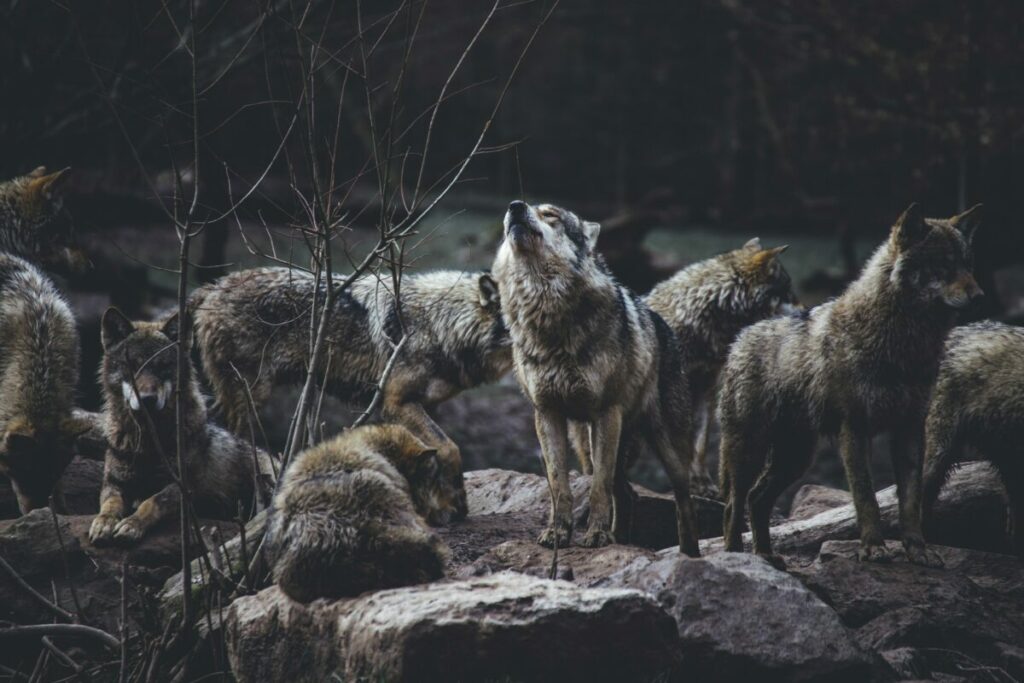
Wolves, a symbol of wilderness, play a pivotal role in ecological dynamics. Their presence indicates a healthy and balanced ecosystem.
The wolf species and their respective habitats are wide-ranging. The gray wolf, for instance, commands territories throughout Europe, Alaska, Canada, and certain parts of Asia. However, ruthless hunting has pushed them to extinction in some regions.
Then, there’s the red wolf. Its hunting ground is predominantly in the southern United States. Sadly, its numbers have dwindled alarmingly due to substantial hunting and trapping. But thanks to concerted conservation efforts, approximately 100 red wolves roam in the wild.
Wolf Taxonomy
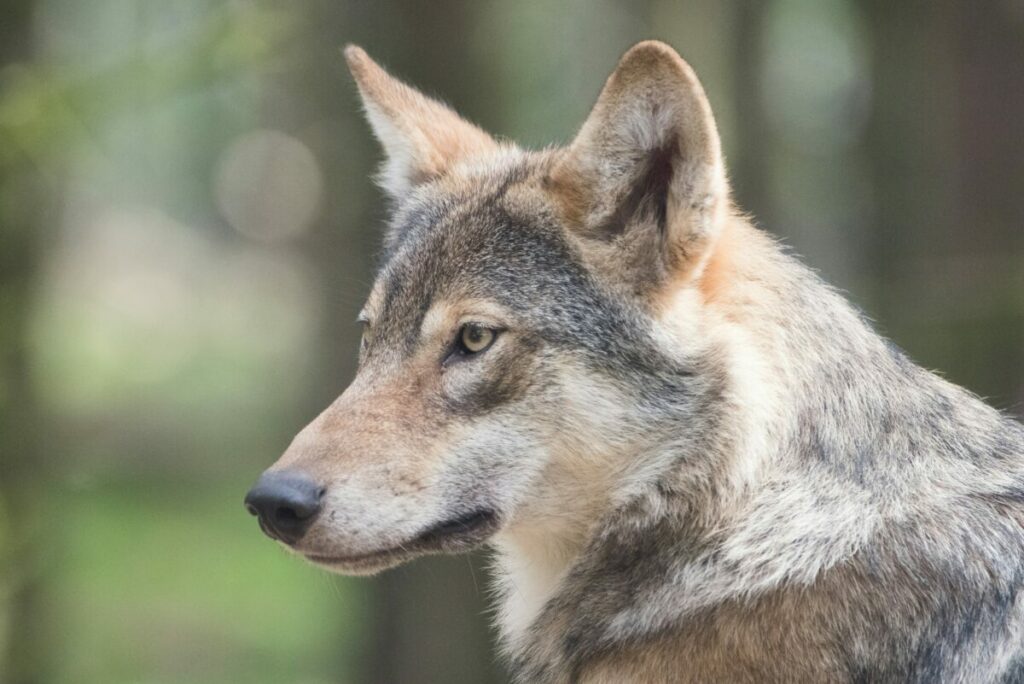
Canis lupus, the gray wolf, is recognized as the largest wild member of the Canidae family. Subspecies include the Arctic, Eurasian, Indian, and Mexican wolves. The Canis rufus, or red wolf, is less common, which is distinct but shares common ancestry.
Physical Characteristics
Wolves display significant variability in size and fur coloration, largely influenced by their habitat. Adult wolves typically weigh between 40 to 175 pounds. Their fur, a mix of grays, whites, blacks, and browns, provides camouflage and insulation.
Wolf Behavior and Social Structure
Wolves are social animals forming structured packs, reinforcing their success in hunting and territory defense. Pack hierarchy is maintained by clear social constructs, with the dispersal of young adults ensuring genetic diversity and population control.
Distribution and Habitat
Wolves have adapted to an expansive range of environments, prospering across multiple continents and a variety of ecosystems.
Geographical Range
Wolves inhabit vast stretches of the Northern Hemisphere, from the Arctic regions of North America and Eurasia to parts of the Middle East and even North Africa.
Populations thrive in Canada, Alaska, the U.S., parts of Asia, and Europe. Specific territories include Eurasia, from Eastern Europe to Russia, and North America, where their presence is notable in Canada and Alaska.
Habitat Preferences
These canids are versatile and occupy forests, arctic tundra, grasslands, mountains, and occasionally deserts. In Asia, wolves adapt to habitats ranging from Arabian deserts to the Siberian Arctic. European wolves might be found roaming from Scandinavian forests to the plains of Spain.
Despite this diversity, wolves typically favor regions with ample prey and minimal human disturbance.
The Unique Features of Wolf Habitats
The classic wolf habitat tells a tale of vastness, adaptability, and resilience. Wolves can traverse up to 12 miles daily, occupying diverse ecosystems from icy tundras and plains to dense forests.
A Diet Dictated by the Environment
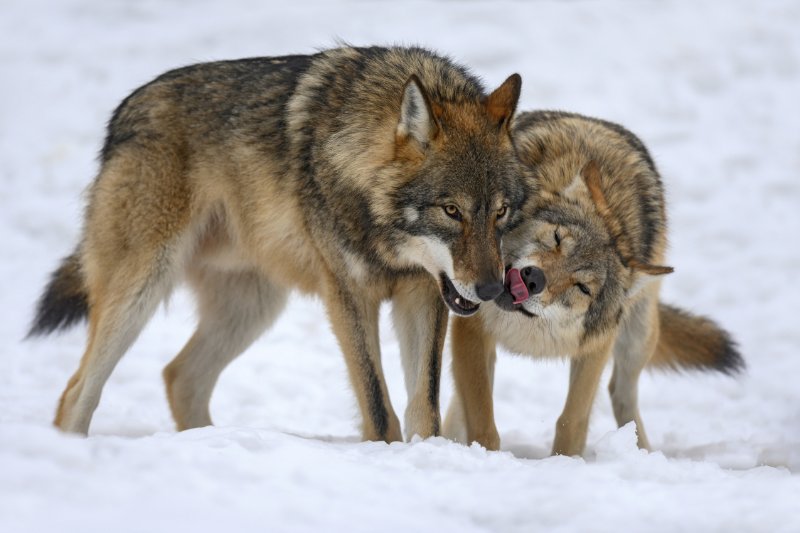
Wolves’ locations often prohibit the consumption of plant or grass-based diets. This restriction has edged them into being meat-eaters, often hunting various other fauna that share their terrain. Wolves exhibit selective and strategic foraging behaviors to meet their dietary needs. Wolves’ locations often prohibit the consumption of plant or grass-based diets. This restriction has edged them into being meat-eaters, often hunting various other fauna that share their terrain.
Prey Selection
Wolves predominantly target ungulate mammals, with a preference for deer, elk, caribou, moose, and bison. In regions where these are less available, livestock can become a substitute. They focus on the abundance and vulnerability of prey to efficiently fulfill their energy requirements.
Hunting Techniques
Pack hunting is a signature wolf strategy, enabling them to take down large and robust mammals. They employ stealth, coordination, and endurance to isolate and overcome their target. Solitary wolves or pairs typically pursue smaller mammals, relying on stealth and surprise.
Reproduction and Lifecycle
Wolves demonstrate a structured reproductive strategy that contributes to the survival and expansion of their populations within their habitats.
Mating and Offspring
Mature wolves typically commence breeding between two and three years of age, often establishing monogamous pair bonds.
Breeding pairs, usually the alpha male and female of a pack, lead mating activities, which tend to occur in late winter. The female undergoes a gestation period of about 63 days before giving birth to a litter averaging four to six pups.
Growth and Development
Pups are born blind and deaf in the secure setting of a den, depending on their parents and pack for sustenance and protection.
This phase is critical as they develop sensory abilities and motor skills.
With time, these young wolves mature and may disperse from their natal pack to join new packs or create their own family groups.
Adapting to a Changing Wolf Habitat

Wolves exhibit a remarkable ability to adapt to different feeding opportunities or a suitable place to create a den. While their ideal dwelling is near water, their resourcefulness allows them to construct their homes using rocks, logs, and even loose soil.
However, not all places are suitable. Rainforests and harsh deserts prove inhospitable for these majestic beasts. Observing their resilience in the face of our changing globe truly enhances appreciation for the wolf habitat.
The Human Impact on the Wolf Habitat

Human actions have drastically reshaped wolf habitats. As we encroach upon the plains and forests, wolves are forced to adapt swiftly. Despite these obstacles, they’ve proven their resilience, flourishing virtually anywhere they can find food and water.
Protection and Conservation Efforts
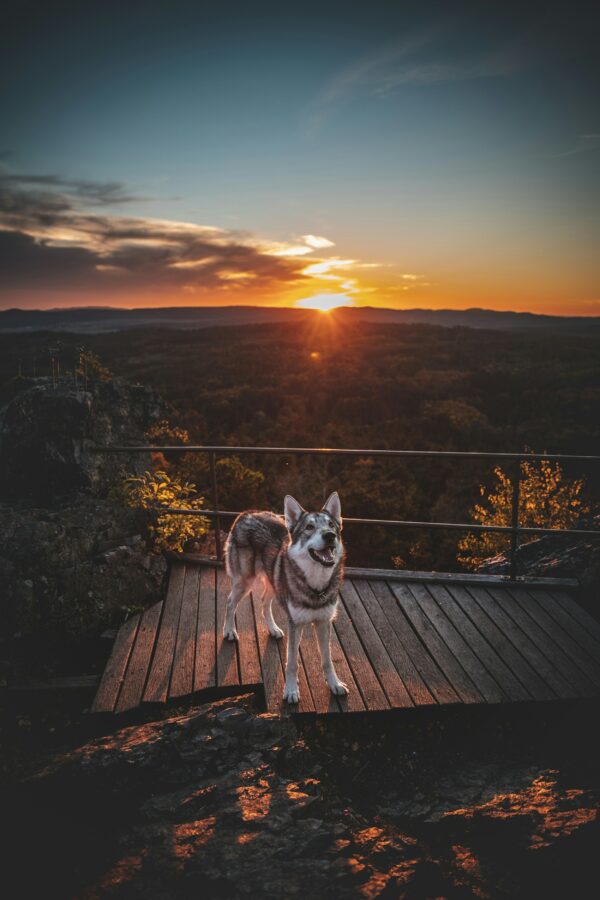
Wolves face ongoing challenges due to human activities and require targeted conservation initiatives to survive and thrive. Wolves’ habitats often overlap with human domains, leading to conflict.
Saving the wolves and their habitats requires vigilant protection and conservation efforts. It includes enforcing legislation to restrict hunting and ensuring their habitats remain intact.
- Strong legislation against hunting
- Habitat Conservation
Conservation measures have enabled some wolf species to move back from the brink of extinction. The Mexican wolf has been under protection since 1976, reflecting these efforts.
Strategies include protected status under laws like the Endangered Species Act, habitat restoration, and the reestablishment of wolf populations in suitable habitats.
Robust legal protection and scientifically backed management plans are critical for the continued recovery of wolf populations worldwide.
We can significantly aid in their survival and propagation by gaining a deeper understanding of the wolf habitat. Every measure we take to lessen our environmental impact helps the wolves from nearing extinction and conserves the fascinating world they inhabit.
Wolves exhibit complex behaviors essential for their survival and the dynamic functioning of their ecosystem.
Inter-Pack Dynamics
Wolves live in structured social units known as packs.
Hierarchy is a defining feature, with a dominant alpha male and alpha female presiding over the pack.
Subordinate members fall below the alphas in the pecking order, and disputes for dominance can occur, often dictated by age, strength, and personality.
Communication and Territoriality
Communication among wolves is multifaceted, involving vocalizations, scent marking, and body language. Howling serves multiple purposes: reinforcing social bonds, coordinating hunting, and demarcating territory.
Neighboring packs utilize these vocalizations to avoid confrontations, ensuring they respect each other’s established territories.
Wildlife Health
As apex predators, wolves are susceptible to various diseases that can affect their health and the balance of ecosystems they inhabit.
Common Diseases
- Canine distemper: A viral disease impacting the respiratory, gastrointestinal, and central nervous systems.
- Rabies: A fatal viral infection that can spread to other species, including humans.
Wolf Care and Management
- Prevention: Vaccination programs for diseases like rabies and distemper.
- Parasite Control: Managing lice and other parasites is essential for maintaining wolf populations.
Wolf and Human Culture
Wolves and humans have a multifaceted relationship, intertwining ecology and mythology with social dynamics. Historically, canines, including domesticated dogs, have shared strong links with human society, often existing as hunters, protectors, and companions.
- Family Groups: By mirroring human structures, wolves live in packs, essentially extended family groups with complex social hierarchies.
- Cultural Significance: In human culture, wolves are significant in mythology and storytelling, symbolizing nobility and nature’s wild spirit.
- Coexistence: As predators, wolves play a crucial role in ecosystems, influencing human perceptions of wilderness and prompting conservation efforts.
Humans have impacted wolves’ lifestyles and habitats, while wolves, in turn, have influenced human culture and the development of domestic dogs.
Understanding the cultural dimensions of the interaction between humans and wolves is essential for fostering coexistence and ensuring stable ecosystems.
Research and Study
In wolf conservation, research serves as the backbone for informed decision-making. Studies on wolf populations yield critical data, assisting in habitat selection and species management.
Researchers utilize field observation and data collection to monitor wolves, exploring impacts on ecosystem dynamics.
Research Highlights:
- Reproductive Ecology: Examination of wolf breeding patterns sharpens understanding of population dynamics.
- Habitat Selection: Analysis of wolf territory preferences informs conservation strategies.
- Ecosystem Role: Investigations into how wolves affect prey populations and vegetation demonstrate their ecological significance.
This collective research underscores the necessity for ongoing analysis as it provides the scientific foundation for sustainable conservation efforts.
Unique Adaptations
Wolves possess diverse adaptations that enable their survival across various environments, from the icy tundra of the Arctic regions to dense forests.
- Senses: Wolves have acute senses, notably a strong sense of smell and keen hearing. This sensory acuity allows them to detect prey, communicate, and navigate their territory effectively.
- Tail: The bushy tail serves multiple purposes, including maintaining balance when running and communicating with pack members through body language.
- Shoulder: Wolf shoulder adaptations assist in enduring long chases, vital for hunting in vast, open landscapes where endurance is key.
- Jaws and Teeth: Powerful jaws with a bite force exceeding that of domesticated dogs and robust canine teeth make wolves formidable hunters.
- Females: Female wolves are vital to pack continuity and exhibit specific reproductive adaptations. They select mates based on social structure, ensuring genetic diversity and pack stability.
- Gestation Period: The average gestation period for a wolf is about 63 days, which allows for rapid population growth under favorable conditions.
- Howls: Howls are a versatile communication tool useful for long-distance communication among pack members and in territorial displays.
In Arctic regions, wolves have evolved to cope with extreme cold; their footpads can withstand frigid temperatures, a testament to their remarkable adaptability.
Ecological Impact
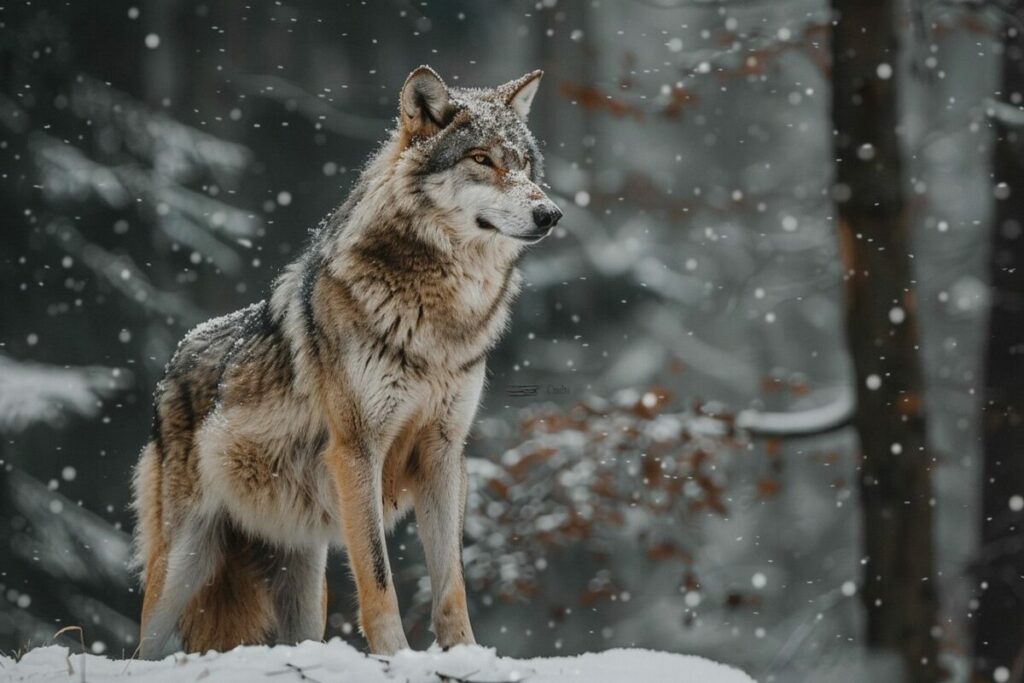
In the intricate web of an ecosystem, wolves exert a profound influence. As apex predators, they are pivotal in maintaining trophic cascades, which preserve ecological balance. Their predation habits regulate prey populations, affecting plant communities and the behaviors of other wildlife species.
Predators like wolves can alter the distribution of herbivores such as elk and deer, reducing overgrazing and enabling vegetation to recover. This process, known as a trophic cascade, can increase biodiversity.
For example, the reintroduction of wolves in Yellowstone National Park has been documented to cause shifts in elk behavior. This prevents them from lingering in vulnerable riparian areas, benefiting ecosystem dynamics.
Notably, their role as carnivores is instrumental in hunting strategies that often target the weak or sick, thus strengthening the overall health of prey populations. In essence, the presence of wolves is a critical factor in ecosystem balance, with their behavior having cascading effects across various species and habitats.
Wildlife Management
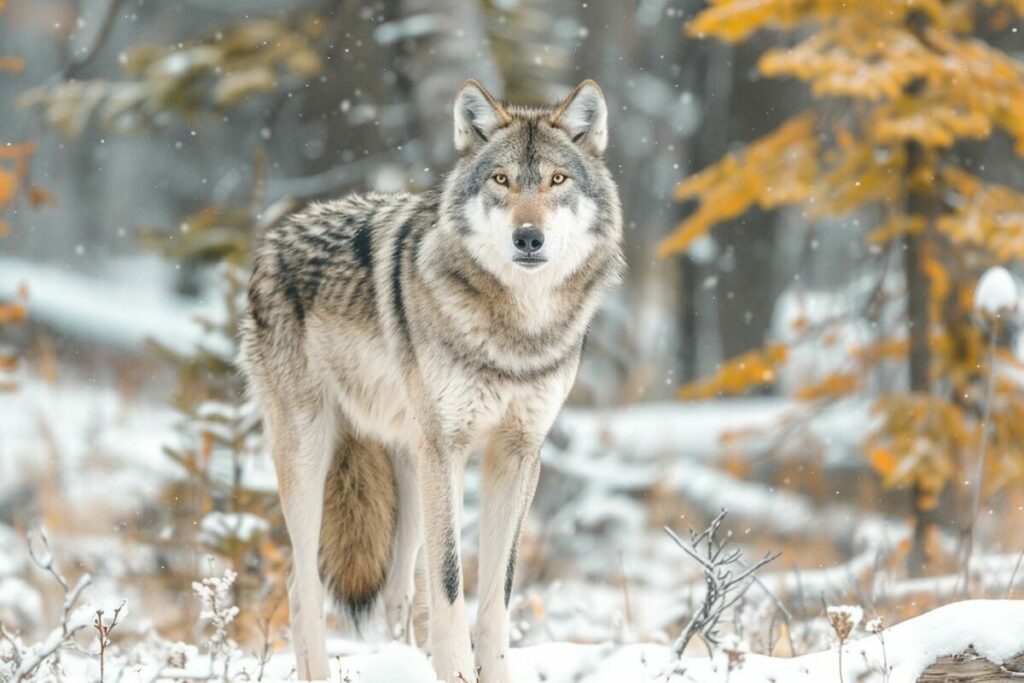
Effective wolf conservation is a multifaceted discipline that prioritizes habitat preservation and robust ecological networks. Wildlife managers balance the needs of wolves with human interests through numerous strategies.
Game management practices regulate hunting to maintain stable wolf populations while addressing concerns around human-wildlife conflict, particularly in regions where wolves intersect with livestock.
- Conservation efforts include:
- Designating protected areas
- Implementing recovery programs for endangered species
- Employing non-lethal deterrents to minimize conflict
Ecotourism contributes to conservation by transforming wolves into a valued economic asset fostering human coexistence through appreciation and education. Adaptive strategies remain crucial to address ongoing challenges in wildlife management.
Global Populations and Trends
Wolf populations exhibit diverse trends globally. In Europe, specifically Italy, wolves have shown remarkable recovery. Estimates surged from 103 in 1973 to between 1,212 and 1,711 by 2016.
Globally, gray wolves number over 200,000 individuals, with many populations experiencing growth. In the U.S., the Mexican wolf remains endangered, with an approximate wild population of 240. The gray wolf’s nationwide recovery efforts reflect a broader distributional rebound.
Population genetics and surveys drive these conservation narratives. They inform both habitat selection and species management strategies.
The continuous monitoring employs field studies and demographic modeling. It underpins effective management and policy decisions.
These decisions are crucial in understanding and projecting future range sizes and trends for these keystone predators.